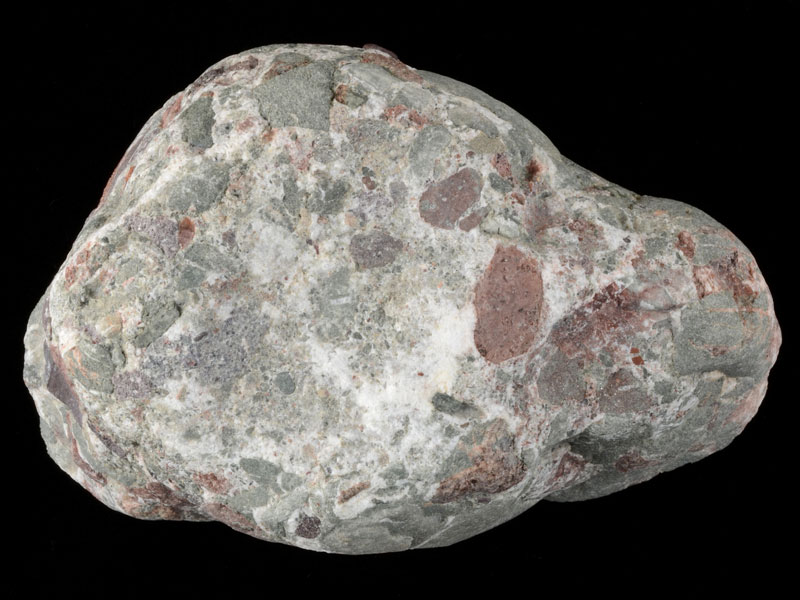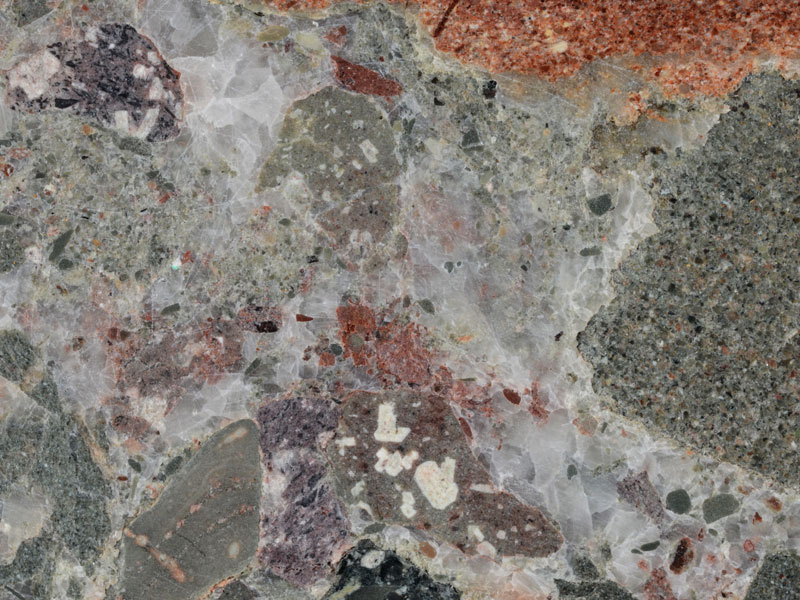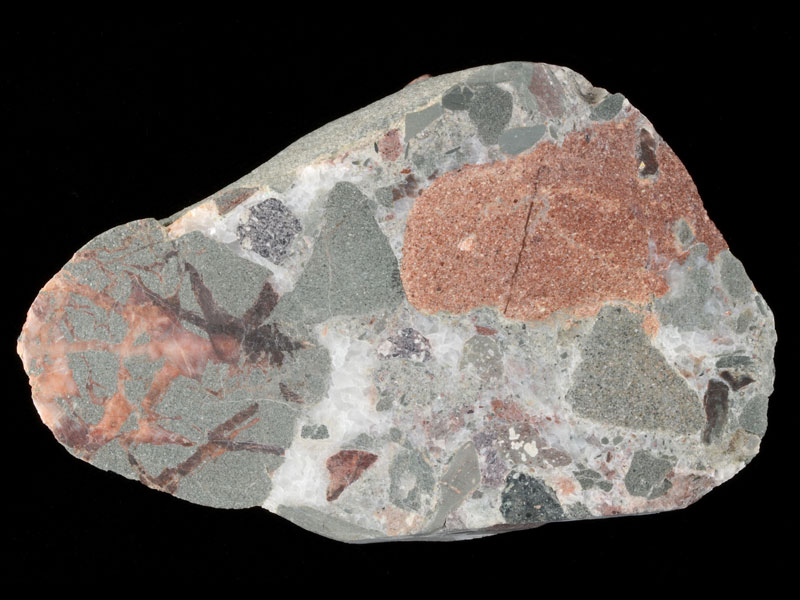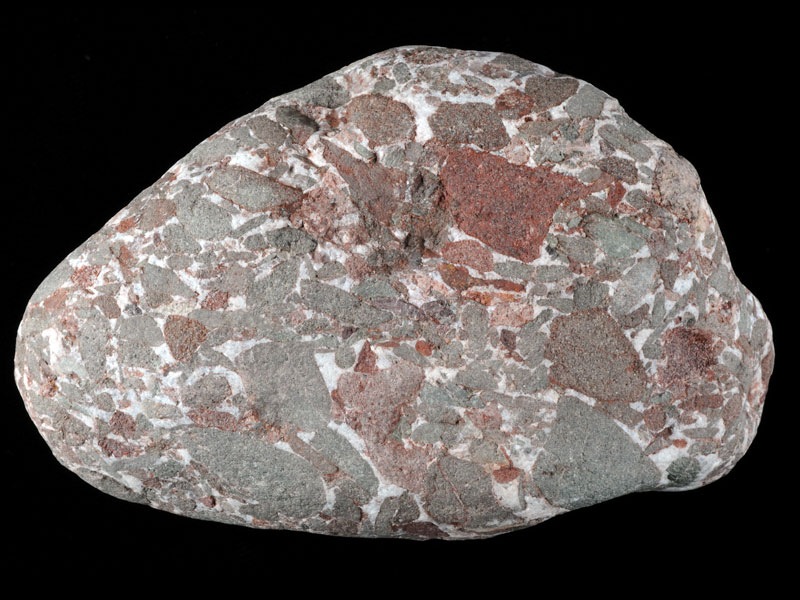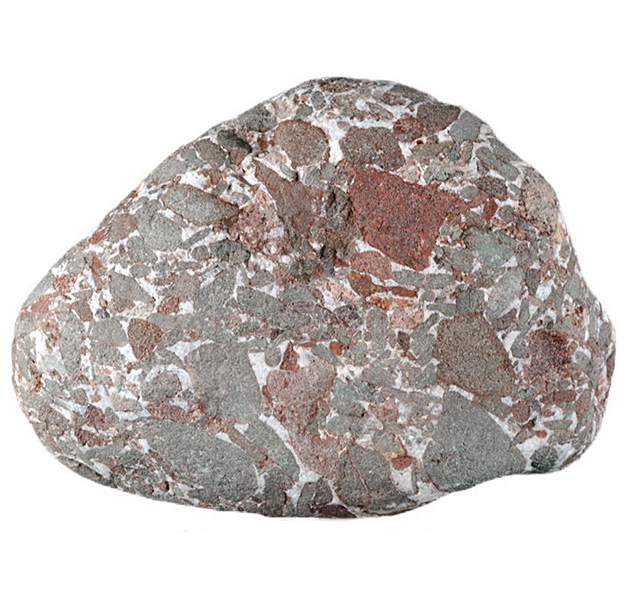
Fact sheet
Clasts in this Carboniferous age conglomerate range from semi-rounded poorly sorted immature siltstones, to elongate mudstone fragments and rare volcanic clasts. The framework is supported by the larger clasts and voids contain smaller clasts notably the rounded elongate mudstone fragments.
In thin section the rock is composed of rock fragments all of which appear to contain angular quartz and feldspar fragments cemented by clay and some calcite. Poorly defined sedimentary banding is present in some clasts. Angular altered volcanic rock fragments are also present, and one clast contains larger altered biotite grains indicating alkalic or acidic volcanism. The conglomerate is cemented by coarse-grained sparry calcite cement that also fills in cracks within the clasts.
The United Kingdom Virtual Microscope (UKVM) collection consists of igneous, sedimentary and metamorphic rocks from around the UK.
It is intended as a teaching resource, helping to tell the story of the common rock types and how they form, and reflecting the history of the UK at the margins of the continent of Europe. The collection is a series of teaching sets, for example igneous rocks from the North Atlantic Igneous Province and SW England; high-temperature metamorphic rocks from Scotland and low-temperature metamorphic rocks from Wales; and sedimentary rocks, including English limestones and sandstones.
